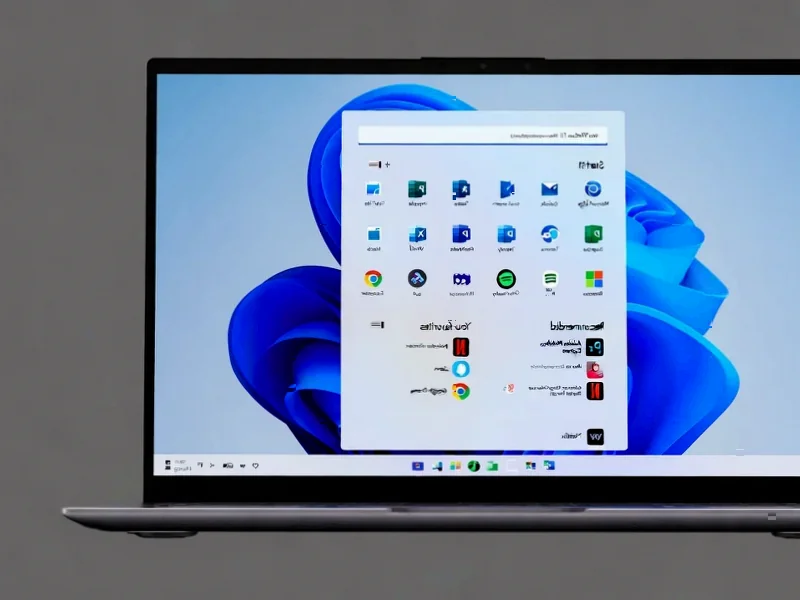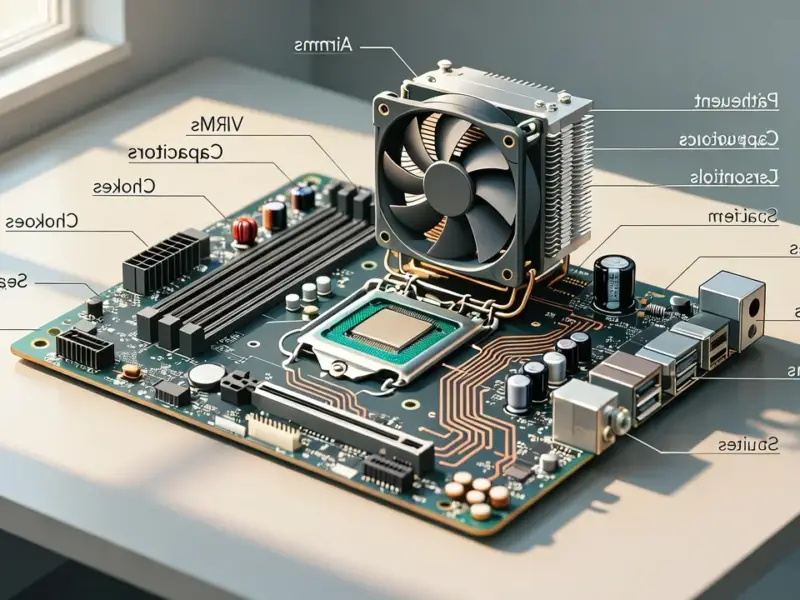According to VentureBeat, a new deterministic CPU architecture using time-based execution has emerged as the first major challenge to speculative execution in over three decades. The technology is protected by six recently issued U.S. patents and features a time counter that assigns precise execution slots to instructions based on data dependencies and resource availability. Unlike speculative processors that predict outcomes and discard work when wrong, this deterministic approach uses a Register Scoreboard and Time Resource Matrix to schedule instructions only when operands are ready, eliminating pipeline flushes and wasted energy. The architecture extends to matrix computation with configurable GEMM units ranging from 8×8 to 64×64 and shows scalability rivaling Google’s TPU cores while maintaining lower cost and power requirements. This represents a fundamental shift from the speculative execution paradigm that has dominated since the 1990s.
The Architectural Paradigm Shift We’ve Been Waiting For
What makes this development particularly significant is that it addresses multiple fundamental limitations of modern computing simultaneously. For years, the industry has been treating symptoms rather than causes when it comes to processor inefficiency. We’ve seen increasingly complex branch predictors, elaborate cache hierarchies, and sophisticated power management techniques – all attempts to work around the inherent unpredictability of speculative execution. This deterministic approach represents a return to first principles, echoing the RISC philosophy that simpler, more predictable designs can ultimately outperform complex, unpredictable ones.
The timing couldn’t be more critical. As we enter the era of edge AI and ubiquitous computing, the power inefficiency and performance variability of speculative processors become increasingly problematic. Autonomous vehicles, industrial IoT systems, and real-time medical devices require predictable performance far more than they need occasional bursts of peak throughput. The deterministic model’s ability to provide consistent, predictable execution cycles could enable a new class of applications where timing guarantees matter more than raw speed.
Beyond Performance: The Security Revolution
One of the most compelling aspects of this architecture is its potential to eliminate entire classes of security vulnerabilities that have plagued modern computing. Spectre and Meltdown demonstrated how speculative execution could be exploited to leak sensitive information across security boundaries. These vulnerabilities stem from the fundamental nature of speculation – executing instructions before knowing whether they should execute at all. The deterministic model, by eliminating speculation entirely, removes this entire attack surface.
This security benefit extends beyond just preventing known exploits. The predictable nature of deterministic execution makes timing attacks significantly more difficult, as attackers can no longer rely on the variable timing characteristics of speculative execution to infer sensitive information. For security-critical applications in finance, government, and healthcare, this architectural shift could provide the foundation for genuinely secure computing platforms without the performance penalties of current mitigation techniques.
The Future of AI Computing Architecture
The implications for AI workloads are particularly profound. Current AI accelerators, including GPUs and TPUs, achieve high performance through massive parallelism and specialized matrix units, but they still rely on complex scheduling and memory systems that introduce unpredictability. The deterministic approach, with its configurable GEMM units and time-based scheduling, could provide the best of both worlds: the predictable performance of specialized hardware with the programmability of general-purpose processors.
What’s especially interesting is how this architecture might influence the next generation of AI infrastructure. As companies struggle with the enormous power consumption of AI data centers, a more efficient computational model becomes increasingly valuable. The ability to deliver datacenter-class performance without datacenter-class overhead could reshape the economics of large-scale AI deployment. We’re likely to see hybrid systems emerge where deterministic processors handle the predictable matrix operations while traditional CPUs manage control flow and irregular workloads.
The Road to Mainstream Adoption
The transition to deterministic computing won’t happen overnight. The entire software ecosystem, from compilers to operating systems to applications, has been optimized for speculative processors over decades. However, the RISC-V compatibility of this architecture provides a crucial advantage. Developers can continue using familiar tools and programming models while gradually optimizing for the deterministic execution model.
The real test will come in specialized domains where predictability matters more than peak performance. Embedded systems, real-time control, safety-critical applications, and edge AI represent natural early adoption markets. As the technology matures and demonstrates its advantages in these domains, we’ll likely see gradual penetration into more general-purpose computing. The principles of simplicity that guided the original RISC movement appear equally relevant today, suggesting that this architectural shift could follow a similar adoption curve.
Long-Term Industry Implications
Looking ahead 3-5 years, I expect to see deterministic principles influencing processor design across multiple segments. While traditional speculative execution will likely remain dominant for general-purpose computing, deterministic approaches could capture significant market share in specialized domains. The most interesting development will be how existing processor vendors respond – whether through licensing this technology, developing their own deterministic implementations, or enhancing their speculative architectures to address the same limitations.
The emergence of this technology also signals a broader trend toward domain-specific architectures that prioritize efficiency and predictability over raw performance. As computing becomes more ubiquitous and power-constrained, we’re likely to see more architectural innovations that challenge long-standing assumptions. The deterministic CPU represents not just a technical improvement but a philosophical shift toward designing computers that do exactly what we tell them to do, exactly when we tell them to do it – and that might be exactly what we need for the next era of computing.




